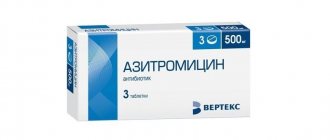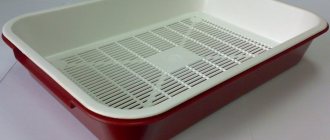Type of substance
Bentonite is a clay consisting of 70% layered highly dispersed mineral montmorillonite. The substance is one of the types of aluminosilicate, where some of the silicon ions are replaced by cations of sodium, calcium and other metals.
Additive E 558 is included in the group of emulsifiers. When diluted with water, the substance forms a viscous gel-like substance with thixotropic properties.
Based on their composition, bentonites are divided into three types:
- alkaline (the main component is exchangeable sodium cations), have a high degree of swelling and better technological properties. Rarely found in nature;
- alkaline earth (calcium cations predominate, magnesium cations predominate) with a low degree of swelling. This type is characteristic of many Russian bentonite deposits. To improve the technological qualities, the wet mineral is activated with soda ash, giving it alkaline qualities and all the advantages of sodium bentonites;
- mixed, with approximately equal ratios of sodium and calcium components, have intermediate qualities: average colloidality and dispersity.
Concrete occurs at a depth of up to 100 m; the mineral is mined using open-pit mining.
Additive E 558 is a completely natural product.
Why bentonite?
To make the final choice in favor of cleaning mash with bentonite, you need to remember the key features of this method:
- the absorbent is completely natural, harmless and chemically neutral, therefore it does not have a negative impact on the health of the consumer and the amount of alcohol in the wort;
- bentonite is guaranteed to remove the remains of live yeast from the liquid, increasing the quality characteristics of the mash;
- The yeast that gets into the distillation cube imbues the moonshine with a burning smell. White clay perfectly solves the problem by absorbing excess yeast, thanks to its absorbent properties. The unpleasant yeast aroma disappears, the yeast does not burn during distillation;
- bentonite captures foreign impurities and promotes rapid precipitation, which has a sharply positive effect on the taste of the final product.
There is no ideal cleaning method (or it is carefully hidden by moonshine masters), therefore, the method of clarifying mash with bentonite is not without some disadvantages:
- The main disadvantage of white clay is its inaccessibility. And searching for a high-quality analogue can require a lot of time and finances;
- bentonite slightly reduces the volume of the final product. To prepare the desired amount of drink, you will either have to add the ingredients, taking into account the error, or be content with what remains after clarification;
- thick mash made from grain or fruit cannot be clarified using white clay. In liquid media with high density, the absorbent forms a suspension that does not precipitate. It is impossible to distill such mash; the batch will have to be disposed of.
The advantages of bentonite are obvious, but the disadvantages are very subjective. White clay is convenient and easy to use to lighten mash. Bentonite forgives minor mistakes and errors, so it is suitable even for novice moonshiners. That is why this material receives the best recommendations and is widely used among amateurs and professionals of home brewing.
Properties
| Index | Standard values |
| Color | white with brown or gray tint |
| Compound | oxides of silicon, aluminum, impurities oxides of potassium, calcium, sodium, iron, magnesium and others; Al2O3 • 4SiO2 • nH2O |
| Appearance | powder, granules |
| Smell | absent |
| Solubility | insoluble in all basic liquids (water, ethanol, ether, acids, alkalis) |
| Main substance content | SiO2 no less than 57%, Al2O3 no less than 13% |
| Taste | absent |
| Density | from 2.66 to 2.84 g/cm3 |
| Other | high hydrophilicity, swells 16 times when hydrated; plastic; resistant to chemical acids; has the ability to self-disperse |
Key selection points
The litter should, first of all, motivate the animal and help it decide where to go to the toilet. Cats reason like this: “If there is nothing to rake and nowhere to rummage, perhaps this is not a toilet at all.”
Before choosing, highlight your priorities too, take into account the following points:
- the ability of the filler to remain clean and hygienic for as long as possible (minimizes cleaning of the tray);
- the ability to throw sewage from the tray directly into the toilet;
- good absorption of unpleasant odors;
- profitability - using a portion of filler for a long time (it should last for a long time);
- the filler should not be carried around the apartment on the animal’s paws and fur.
We invite you to familiarize yourself with the Thai cat











